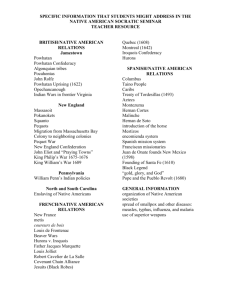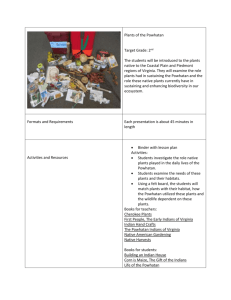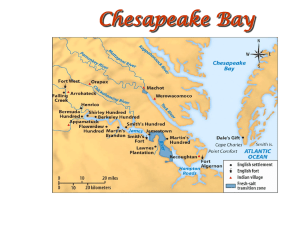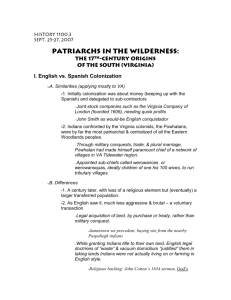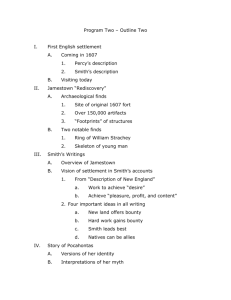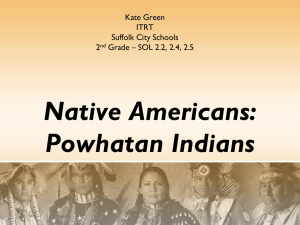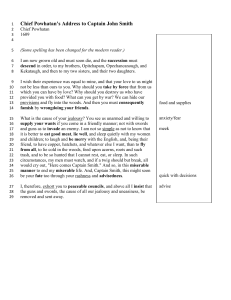Migration to Virginia Early American Social History Term 1 Week 3
advertisement
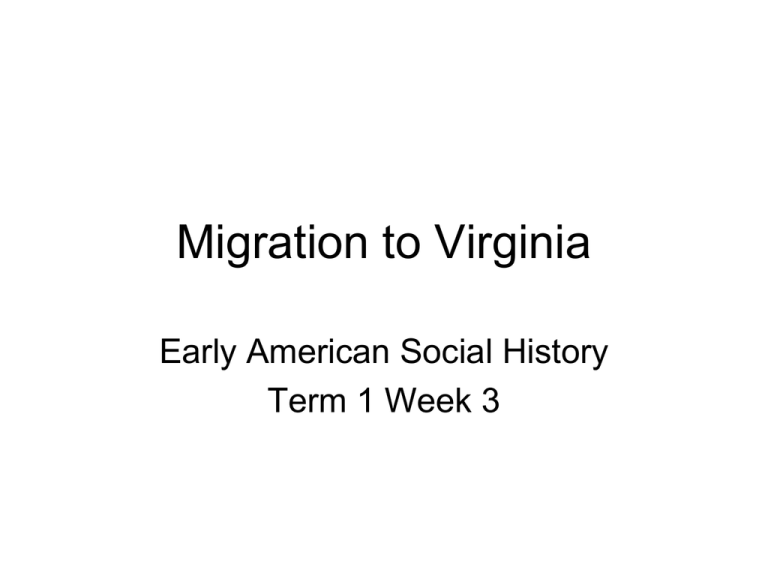
Migration to Virginia Early American Social History Term 1 Week 3 After Roanoke • Delays until accession of James I (1603-25) • Role of Merchants • 1606 charters given to Virginia Company of London and Virginia Company of Plymouth to settle between 34 and 45 degrees N latitude, (NC to Maine) The Virginia Company • Constitution and purpose • Recruitment • 3 ships (Godspeed, Discovery and Susan Constant) • Arrives Jamestown May 1607 James Fort Migrants • • • • • All migrants before 1618 = male, most young (under 25) Campbell / Galenson debate over social status Main motivation = economic Religious motivations? Imp of indentured labour Problems of Authority • Sources of Authority • Virginia’s crisis of authority • John Smith The ‘Starving Time’ • “of five hundred within six months after Captain Smith’s departure, there remained not past sixty men, women and children, most miserable and poor creatures; and those were preserved for the most part, by roots, herbs, acorns, walnuts, berries, now and then a little fish: they that had starch in these extremities, made no small use of it: yea even the very skins of our horses….so great was our famine that a savage we slew and buried, the poorer sort took him up again and ate him; and so did diverse one another boiled and stewed with roots and herbs; and one amongst the rest did kill his wife, salted her, and had eaten part of her before it was known, for which he was executed, as he well deserved; now whether she was better roasted, boiled or grilled, I know not; but of such a dish as powdered wife I never heard of.” Laws Divine, Moral and Martial • • • • Introduced 1611 Purpose Backlash Response Economic Development • Tobacco 1612. • Rapid growth of production, 2,000 lbs in 1615, 1.5m lbs 1629 Native Americans • Powhatan confederacy more powerful than English, c.10,000+ in 1620 • Importance of Powhatan (Wahunsenacawh) • Evolution of relationship Powhatan’s Mantle Given by Powhatan to Capt John Newport, December 1608, now in the Ashmolean Museum, Oxford. Central figure possibly representing Powhatan himself Animal figures (?Mountain lions?) representing strength Circles perhaps referring to other villages/tribes subordinate to Powhatan. 1622 Massacre Aftermath of 1622 • • • • Native American hopes vs reality Different styles of war English ascendency Remaining factors of instability – Political – Demographic
